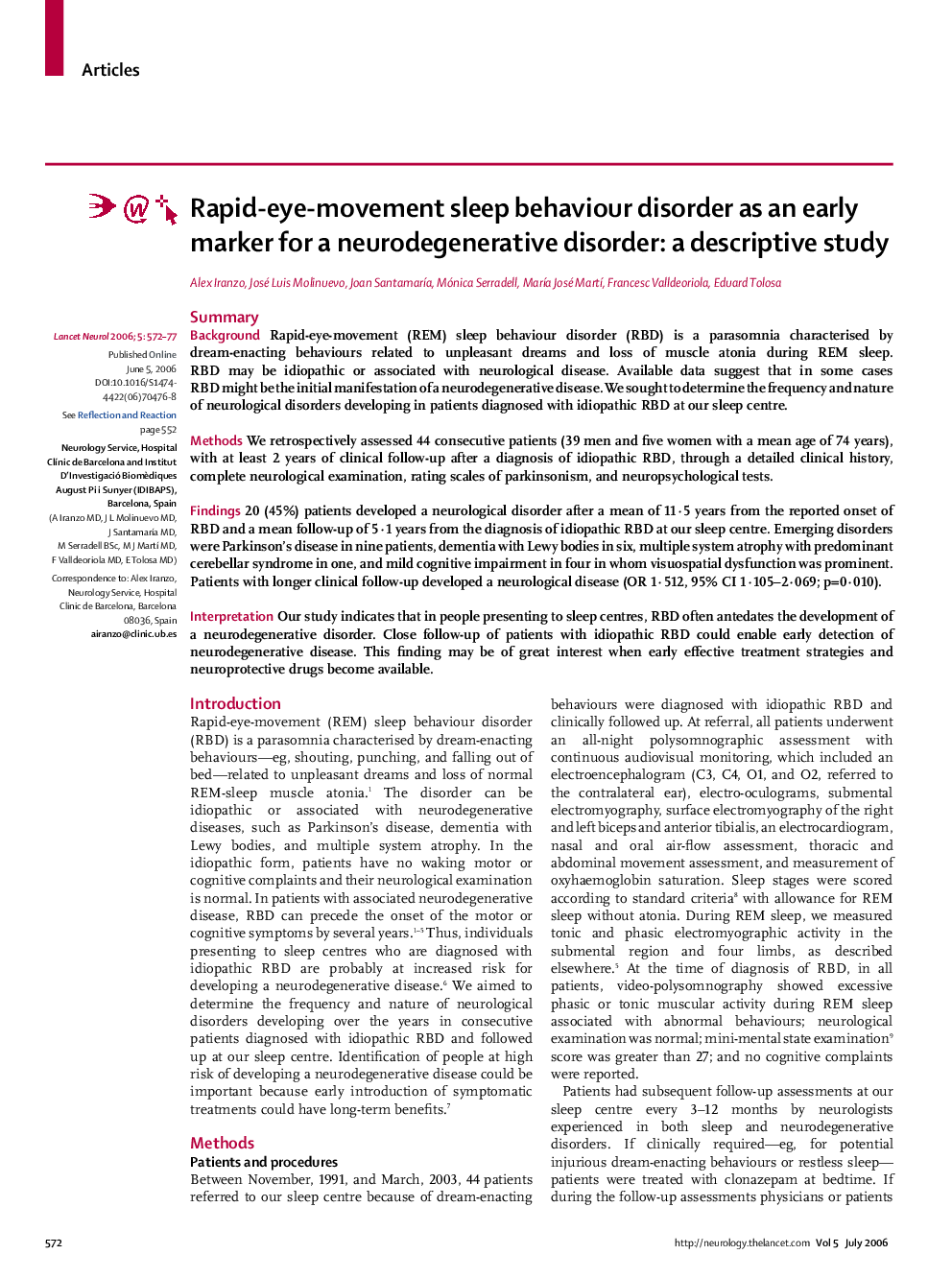| Article ID | Journal | Published Year | Pages | File Type |
|---|---|---|---|---|
| 3068057 | The Lancet Neurology | 2006 | 6 Pages |
SummaryBackgroundRapid-eye-movement (REM) sleep behaviour disorder (RBD) is a parasomnia characterised by dream-enacting behaviours related to unpleasant dreams and loss of muscle atonia during REM sleep. RBD may be idiopathic or associated with neurological disease. Available data suggest that in some cases RBD might be the initial manifestation of a neurodegenerative disease. We sought to determine the frequency and nature of neurological disorders developing in patients diagnosed with idiopathic RBD at our sleep centre.MethodsWe retrospectively assessed 44 consecutive patients (39 men and five women with a mean age of 74 years), with at least 2 years of clinical follow-up after a diagnosis of idiopathic RBD, through a detailed clinical history, complete neurological examination, rating scales of parkinsonism, and neuropsychological tests.Findings20 (45%) patients developed a neurological disorder after a mean of 11·5 years from the reported onset of RBD and a mean follow-up of 5·1 years from the diagnosis of idiopathic RBD at our sleep centre. Emerging disorders were Parkinson's disease in nine patients, dementia with Lewy bodies in six, multiple system atrophy with predominant cerebellar syndrome in one, and mild cognitive impairment in four in whom visuospatial dysfunction was prominent. Patients with longer clinical follow-up developed a neurological disease (OR 1·512, 95% CI 1·105–2·069; p=0·010).InterpretationOur study indicates that in people presenting to sleep centres, RBD often antedates the development of a neurodegenerative disorder. Close follow-up of patients with idiopathic RBD could enable early detection of neurodegenerative disease. This finding may be of great interest when early effective treatment strategies and neuroprotective drugs become available.
